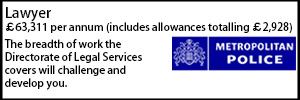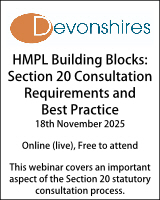The section 58 defence in the Highways Act 1980
The Court of Appeal recently allowed a claimant’s appeal against a judge’s decision to reject his claim for liability against a county council in relation to a hole in a grass verge which caused him to fall off his bicycle. Martin Porter KC and Anastasia Karseras explain why.
- Details
In Karpasitis v Hertfordshire County Council [2025] EWCA Civ 788 on 22 April 2020, one month into the first Covid-19 lockdown, Mr Karpasitis was riding his mountain bike on a path adjacent to a carriageway which was separated by a grass verge. He overtook a jogger on the path, which required him to cycle onto the grass verge. There was a hole in the verge which was sufficient to throw Mr Karpasitis from his bicycle, and he sustained serious injuries. Mr Karpasitis pursued his claim against Hertfordshire County Council; the Council was the highway authority in respect of the grass verge, as well as the adjoining footway and carriageway, where Mr Karpasitis fell.
At the first instance trial on the issue of liability the claim was dismissed. The Claimant successfully appealed on the first ground, namely that the first instance judge had erred in finding that the Council had established the statutory defence afforded by section 58 of the Highways Act 1980 (“the 1980 Act”). Their Lordships did not consider it necessary to determine the second ground of appeal as to whether the first instance judge was right to reject the alternative claim based on common law negligence.
In its Defence, the Council had sought to establish its section 58 defence by asserting that a walked inspection of the path had been conducted on 13 February 2020 by Mr Cooke, who was described in the Defence as a “very experienced, diligent and conscientious highways inspector”. Prior to the service of witness statements, the Council disclosed a document with vehicle data tracked by GPS relating to Mr Cooke’s vehicle on the date of inspection. The data showed that during its journey Mr Cooke’s vehicle stopped once for a period of 3 minutes, which was not enough time to have carried out a walked inspection. Mr Cooke’s witness statement failed to address the GPS data, despite the indication in correspondence that it would.
In his witness statement Mr Cooke said that he would have conducted a walked inspection of the path and the verge on 13 February 2020, that he would not have missed or overlooked such an “obvious and glaring defect” as seen on the Claimant’s photograph, and if he had seen such a hole he would have recorded it as a Category 1 defect (requiring urgent action). Less than three weeks before trial the Council served a Civil Evidence Act Notice in relation to Mr Cooke’s evidence stating that he would not be attending trial because he was retired.
During the trial two of the witnesses who were called by the Council (Mr Allen-Smith and Mr Vine) gave evidence that Mr Cooke would have flagged the defect as Category 2 (not a defect requiring urgent action); their evidence on this point was the opposite of Mr Cooke’s evidence that he would have flagged the defect as Category 1. During a short adjournment, the Council confirmed that they were withdrawing their application to rely upon Mr Cooke’s evidence under the Civil Evidence Act 1995. The Claimant applied to put the relevant passage in Mr Cooke’s statement to Mr Allen-Smith in cross-examination; the Council submitted that this was not permitted unless the Claimant adduced Mr Cooke’s evidence in its entirety. Mr Porter took instructions and informed the court that the Claimant would put the statement of Mr Cooke in evidence “with all the caveats I expressed before, but obviously I am not accepting the content of the statement”.
The first instance judge found that the verge formed part of the highway, that the hole in the verge put the highway into a state of disrepair for the purposes of section 41 of the 1980 Act, and that it was dangerous. However, the judge went on to find that the section 58 defence had been established. The critical element of that analysis was the finding that the hole was not present on the date of inspection relying upon Mr Cooke’s witness statement and the brief record of the inspection that day, and the judge’s decision not to place any weight on the GPS data because that would constitute “impermissible non-acceptance of part of a party’s own witness evidence”. The judge dismissed the claim. The judge said that if he had found the Council liable he would have made a finding of 33% contributory negligence against the Claimant.
At the heart of the appeal was an important question about whether, by putting passages from Mr Cooke’s witness statement to factual witnesses in cross-examination, the Claimant was bound to accept at face value the whole of Mr Cooke’s statement. The judge found in effect that the Claimant was bound to accept it; that no weight should be given to the GPS data, and that Mr Cooke had carried out a walked inspection. In so doing the judge had accepted the submission made on behalf of the Council at trial that this followed from the decision of the Court of Appeal in Property Alliance Group Ltd v. Royal Bank of Scotland plc [2018] 1 WLR 3529.
During the appeal, the court was informed that Mr Cooke’s statement did not address the GPS document because, by oversight, it was not shown to him. In his judgment, Lord Justice Bean said: “The oversight was extraordinary. It seems to me an inevitable inference that no walked inspection of the relevant footway and verge took place on 13 February 2020. Small wonder then, that Mr Cooke did not wish to attend trial, or that Mr Weitzman withdrew the application to rely on his witness statement”.
The Court of Appeal found that it is, no doubt, the general rule that a party cannot put in part of a witness statement served by an opposing party since that would be to contradict the terms of CPR 32.5(5), as noted in Property Alliance. Also, it is a general evidential rule that a party cannot impugn the truthfulness of its own witness. While it is entitled to call other evidence that may provide a different or inconsistent picture, it generally cannot go further and seek to show that the witness cannot be believed on their oath. However, the Court of Appeal considered that this proposition does not give an answer to the question of whether the only way that Mr Porter could challenge Mr Allen-Smith’s evidence as to what Mr Cooke would have done was by putting the whole of Mr Cooke’s witness statement in evidence. In Property Alliance the issue was whether a party could put in evidence part of a witness statement disclosed by the other side, not whether the party could put part of such a statement to another witness in cross-examination.
The Court of Appeal considered the more useful case to be Anonima Petroli Italiana S.p.A. And Neste Oy v. Marlucidez Armadora S.A. (The “Filiatra Legacy”) [1991] 2 Lloyd’s Rep 337. The plaintiffs had sought to recover the value of oil which went missing during a shipment from Turkey to Italy. They put in the written statement of a Captain Bellucci, who had carried out tests when the oil was disembarked at a port in Italy. Over the course of the trial, they sought to distance themselves ever further from his evidence, so that by closing they were submitting that he had not carried out the tests he said he had, a submission which the trial judge accepted when finding for the plaintiffs. When considering the approach to be taken to Captain Bellucci’s evidence the Court of Appeal identified the general evidential rule, namely that a party cannot impugn the evidence of its own witness unless that witness is deemed to be hostile, although by reference to other evidence in the case they might submit that he was mistaken. The position of the party was to be distinguished from that of the judge.
Having reviewed the authorities, Lord Justice Bean found as follows in Karpasitis:
“57. Mr Porter should have been allowed to put it to Mr Allen-Smith that the evidence he had given about what Mr Cooke would have done had the hole been present on 13 February 2020 (in particular, that he would have classified it as category 2) was misleading in the light of the signed statement of Mr Cooke – which Mr Allen-Smith admitted he had read – which stated the contrary. Mr Allen-Smith had created a misleading impression which Mr Porter should have been allowed to correct. Any other approach would conflict with the overriding objective of the Civil Procedure Rules of enabling the court to deal with cases justly.
58. On a proper application of The Filiatra Legacy Mr Porter was entitled to submit to the judge that Mr Cooke’s written evidence, to the extent that he claimed to have carried out a walked inspection in February 2020, was inconsistent with the contemporaneous evidence of the GPS tracking document; and, in the absence of any explanation from Mr Cooke, should be rejected. In fairness to Mr Cooke, I note that the greater part of his witness statement contains phrases such as “I would have done” X or Y, rather than “I remember that I did” X or Y. The witness statement, made more than two years after the accident, is not couched in terms of confident recollection of an actual event. It was unnecessary for Mr Porter to argue that the GPS tracking document showed that he was a liar, only that he was mistaken. There was more scope for a finding that Mr Allen-Smith had been seeking to mislead the court; but that was not a reason to prevent a challenge to that part of his evidence except on the basis of requiring the Claimant to treat Mr Cooke as his own witness.
59. As I have already indicated, Mr Porter should not have been required to “put in” the witness statement of Mr Cooke in order to challenge Mr Allen-Smith on his assertion that Mr Cooke would have categorised the hole as “non-urgent”. But the fact is that he did put it in. Once he had done so, neither the Property Alliance case nor any other authority required the judge to treat its entire contents at face value. That part of Mr Cooke’s witness statement which asserted that he had carried out a walked inspection of the relevant part of the footway and verge on 13 February 2020 should have been treated by the judge as manifestly incredible (see eg per Newey LJ in Kireeva v Bedzhamedov [2022] EWCA Civ 35 at [34]) and given no weight since: a) it was flatly contradicted by the GPS tracking document, which the Council’s solicitors had said showed Mr Cooke’s movements on the day in question; b) Mr Cooke’s brief inspection report was in identical terms to that compiled six months earlier; and c) Mr Cooke had expressed unwillingness to attend the trial for no better reason than the fact that he had retired.
60. Without this evidence from Mr Cooke, the whole basis of the Council’s defence under s58 unravels. Mr Hopwood may well have been right to say that the hole was caused by burrowing rodents. But the cause of the hole seems to me of minimal importance if the Council had not discharged the burden of showing that there had been any inspection of the relevant area for nine months. Where Mr Cooke’s evidence plainly was capable of belief was his assertion that if, in the course of a walked inspection, he had seen a hole in the verge of anything like the dimensions of the hole into which the Appellant rode he would have categorised it as requiring urgent attention. I consider that the judge ought to have held that the Council had failed to establish their statutory defence to the claim based on s41”.
The appeal was allowed, and judgment was entered for the Claimant for damages to be assessed, subject to a deduction of 33% for contributory negligence.
Martin Porter KC and Anastasia Karseras of 2 Temple Gardens were instructed by Jennifer Buchanan and Lewis Ayre of Fieldfisher in London.
Senior Lawyer - Contracts & Commercial
Trust Solicitor (Employment & Contract Law)
Contracts & Procurement Lawyer
Lawyer - Property
Locums
Poll









































